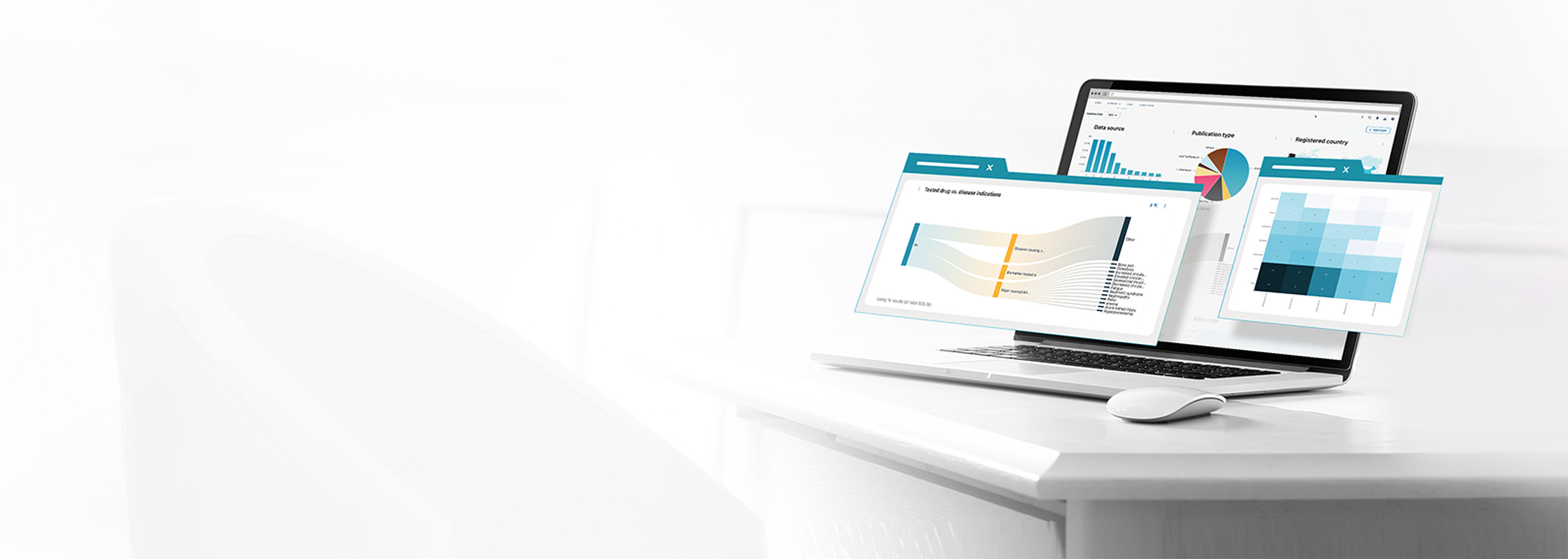
BLOG
ONTOFORCE’s mission is to help life science companies accelerate scientific discovery and drug development to improve patient outcomes. Our flagship product, DISQOVER, is a vital tool in that process, and we work continuously to improve its functionality, usability, and performance.
In this blog we’re detailing some of the latest improvements in DISQOVER’s customizability and data exploration options, along with highlighting new data visualization functionality and how these new features can be applied to support research processes. We also provide information on a few other key enhancements from recent releases, 7.8, 7.9, and 7.10.
DISQOVER offers robust data visualization capabilities, representing intricate graph data into clear, interactive visual formats that are accessible for all users regardless of their data science experience. Through versatile visualizations and customizable charts, users can intuitively filter and drill down into specific data areas. This interactive approach simplifies complex relationships, enabling users to quickly identify patterns, anomalies, and critical insights without needing extensive technical expertise or prior knowledge of the underlying data.
With the new multi-level Sankey diagram now available in DISQOVER, users can visualize complex flows across multi-stage processes. In the below screenshots, see how these new charts can be used to support target prioritization research.

In this example, users can utilize the Sankey diagram to rank targets based on characterization reliability and disease-association explorations, while also obtaining a quantitative view on interactions and the associated cancer landscape. Interactions can provide mechanistic insights, and well-annotated targets would be revealed as they would be specific to a certain cancer, for example. In all, the chart provides an integrated view of multiple attributes at once.

In this case, the Sankey diagram can help users focus on a single target that has a known disease link and explore the mechanisms of how their compound of interest can interact with it/modulate it. Thus, in this example, users derive mechanistic insights from a single target to assess druggability and/or understand how the target interacts with a drug for hit optimization.
Additionally, a new heatmap chart is also now available in DISQOVER. This chart allows users to spot areas of high activity, performance gaps, or inconsistencies to support data-driven decision-making.
-2.png?width=2168&height=608&name=Heatmap%20Count%20of%20genetic%20variants%20per%20population%20(disease%20relevance)-2.png)
Within the context of target prioritization, the heatmap chart can be used to explore research possibilities related to population-specific therapies. Population-specific genetic variants can provide additional evidence for target prioritization, assuming the targets have already been associated with a disease of interest. Targets with a higher number of disease-associated variants in a specific population may indicate stronger genetic support for their role in that population, which can inform the development of population-specific therapies.
DISQOVER is built on knowledge graph technology, integrating and harmonizing heterogeneous data from multiple internal and external sources. An enhanced knowledge graph view is now available in DISQOVER’s new user interface so users can explore the underlying graph in a visual way and deep dive into a concept of interest. They can traverse the graph to learn more about data sources contributing to their concepts and relations between them.

In this screenshot of the knowledge graph view, we see how the Clinical Study concept is linked to related concepts. We are also able to see which data sources are contributing to the graph.
Following a data search or exploration in DISQOVER, users utilize the platform’s advanced filtering features to further drill down data specific to their research criteria. To improve this experience, new filtering functionality has been introduced: it’s now possible to apply filters directly at the chart level to view data distributions for specific values. Filters can now also be quickly removed via a “Remove all filters” button in the search sentence. Additionally, the Ontology tree filter widget is now available in DISQOVER’s new user interface. This allows users to filter on ontology terms like ICD-10, MeSH or others, to explore the entire ontology or search for a specific term.
To make the entry experience more engaging and informative for end users, it is now possible to customize home pages with visual content. Administrator users can enhance home pages by introducing images and videos or by utilizing the new card layout with an image or video, a description, and a selection of concepts. The below screenshot shows an example of how a home page can be customized utilizing the new card layout.

© 2025 ONTOFORCE All right reserved